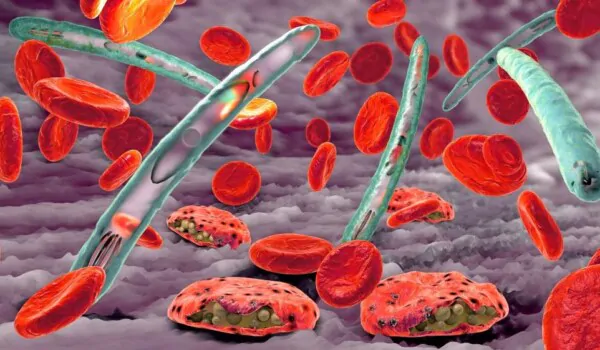
I’m curious to understand the intricate mechanisms by which antimalarial drugs, such as chloroquine, exert their therapeutic effects on the malaria parasite. Could you please elaborate on the specific biochemical processes that occur when these drugs interact with the parasite?

An antimalarial medication called chloroquine is frequently used to treat and prevent malaria. It functions by interfering with multiple phases of the life cycle of the malaria parasite. The way that chloroquine combats the malaria parasite is as follows:
Prevention of Hemoglobin Degradation: Hemoglobin in red blood cells serves as a food source for malaria parasites, especially Plasmodium falciparum. The parasite-infected red blood cells’ acidic feeding vacuoles become accumulated with chloroquine, which prevents the parasite from dissolving hemoglobin into its component amino acids. The parasite dies as a result of this interruption in hemoglobin breakdown, which robs it of vital nutrients.
Inhibition of Heme Polymerization: Toxic heme molecules are released by malaria parasites during the breakdown of hemoglobin.
These heme molecules are bound by chloroquine, which stops them from polymerizing into hemozoin, a crystalline material necessary for the parasite to survive. Chloroquine causes the concentration of poisonous heme in the parasite to rise by preventing heme polymerization, which makes the parasite toxic and ultimately kills it.
DNA Synthesis Interference: It has been demonstrated that chloroquine causes disruptions to the malaria parasite’s DNA synthesis. It is thought to prevent the parasite from replicating its DNA, which hinders the parasite’s growth and reproduction within infected red blood cells.
Chloroquine may also cause the malaria parasite’s other vital cellular functions, like protein synthesis and membrane transport, to malfunction. Chloroquine exhibits strong antimalarial activity by disrupting various components of the parasite’s biology.